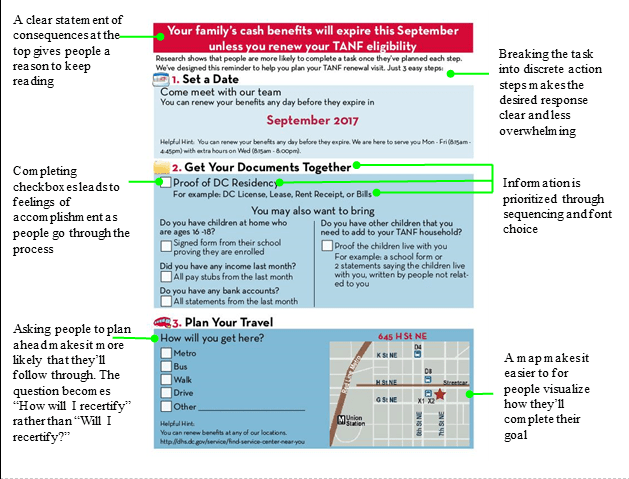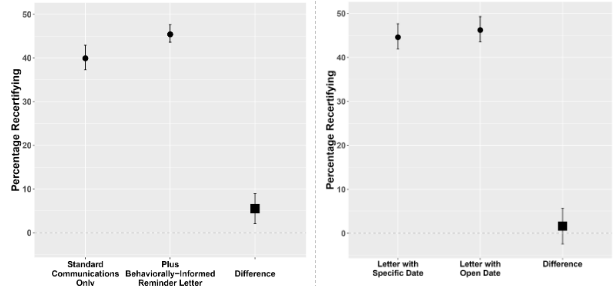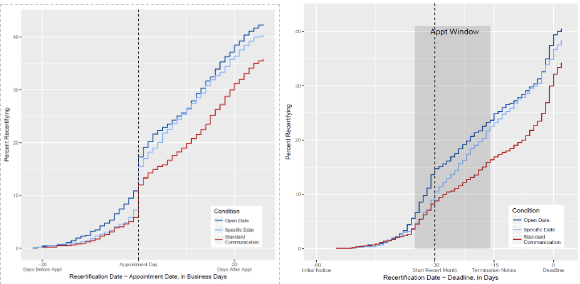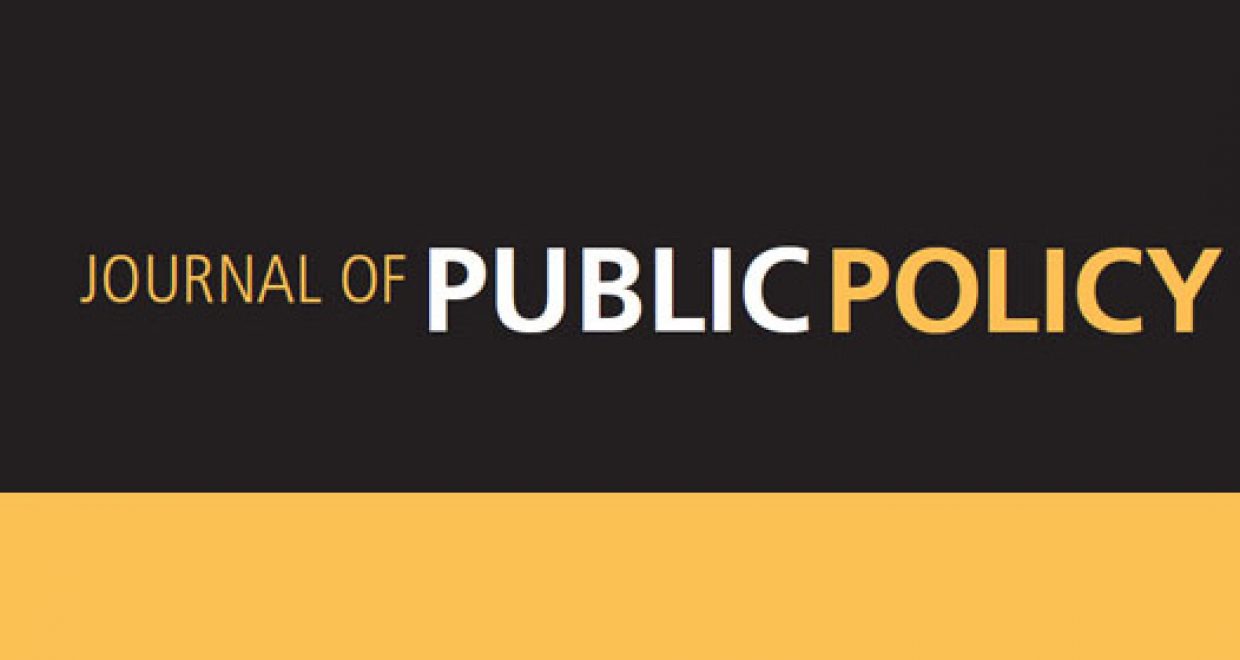Anchor Management: A Field Experiment to Encourage Families to Meet Critical Program Deadlines
In early 2017, only half of Washington, DC families receiving Temporary Assistance for Needy Families (TANF) successfully recertified their eligibility and maintained their benefits. The other half had their benefits terminated. This represented a significant loss of income. Given that 34% of those families were able to successfully re-apply and re-enroll within 90 days, we hypothesized that many families’ benefits were terminated because of the burden of recertification, not because they were ineligible for benefits or chose to no longer receive them.
In collaboration with DC’s Department of Human Services, The Lab @ DC, an applied research team in the Executive Office of Mayor Muriel Bowser, designed a randomized experiment to answer: Can reducing cognitive and administrative burdens make it easier for eligible residents to successfully recertify before their TANF benefits are terminated?

To test this, we randomly assigned 3,539 families due to recertify their TANF benefits to either receive standard communications about their upcoming recertification (“no reminder letter”) or a reminder letter that was resident-centered and leveraged behavioral insights. Of the two-thirds we randomly assigned to the reminder letter treatment, half received a reminder letter with a specific date to recertify (for example, September 17th) and half received a reminder letter with an open date to recertify (for example, September).
The reminder letters included clear steps, bold text, and the date (either specific or open) featured prominently at the top. They also itemized what documents an individual would need to bring to recertify. See Figure 1.
The recertification rate in the control group was 40%. The reminder letters caused a meaningful and statistically significant improvement: 45% and 46% of households that received, respectively, the specific and open date letters recertified. Figure 2 shows these levels, which represent about a 14% relative increase from the standard communication to those receiving a reminder letter. For the District, using the open date letter would have amounted to as many as 766 additional families retaining benefits based on 2017 TANF enrollment. The Bayesian posterior probability estimates a 79% chance that the letter with the open date is more effective at driving successful recertification than is the letter with the specific date.
Figure 2

Figure 3 shows when households recertified relative to the appointment date (left panel) and the 60 calendar days available for recertification from the Initial Notice to the deadline (right panel). We particularly note how individuals act at the end of each month. At the far right of the right panel, there is a sharp increase in recertification activity by all three groups as they approach the end of the deadline month (0 days). More surprising, it appears that there is a similar increase among households with the open date reminder as they approach the beginning of the deadline month—or end of the preceding month (≈ −30 days). This suggests that some individuals may interpret the broad month (e.g., July) in the open date letter as an early deadline for action (e.g., before July 1). There is also suggestive evidence of that date serving as an early anchor.
Figure 3

In addition to adding to the evidence on the efficacy of reminder letters, this study adds nuance to the evidence on how deadlines should be used. In cases with administrative deadlines, we offer suggestive evidence that anchoring people to a deadline month may (1) be sufficient to overcome procrastination, and (2) do so while avoiding the downsides of anchoring people to a specific day that does not work for them. Even if open dates are only marginally more effective than specific dates, they may be administratively or operationally preferable. Specific appointment dates may be more logistically challenging to schedule than establishing a walk-in policy.
We find that behaviorally-designed reminder letters may prove to be a cost-effective means for reducing administrative burdens by reminding residents of dates, clarifying the documents to bring, and making a plan to recertify benefits. Similarly, redesigned outreach notices for child support cases in Georgia simplified language and used formatting to make the most important information prominent. The redesigned notices, and a similar reminder letter, increased office visits by 8.2 percentage points.
With this resident-centered design, DC, and we hope other jurisdictions, can think expansively about how to simplify administrative burdens for residents—and, ultimately, increase access to services for those who need them.
– Ryan T. Moore, American University & The Lab @ DC
– Katherine N. Gan, The Lab @ DC
– Karissa Minnich, The Lab @ DC
– David Yokum, The Lab @ DC
– The authors’ Journal of Public Policy article is available free of charge until the end of November 2022.






